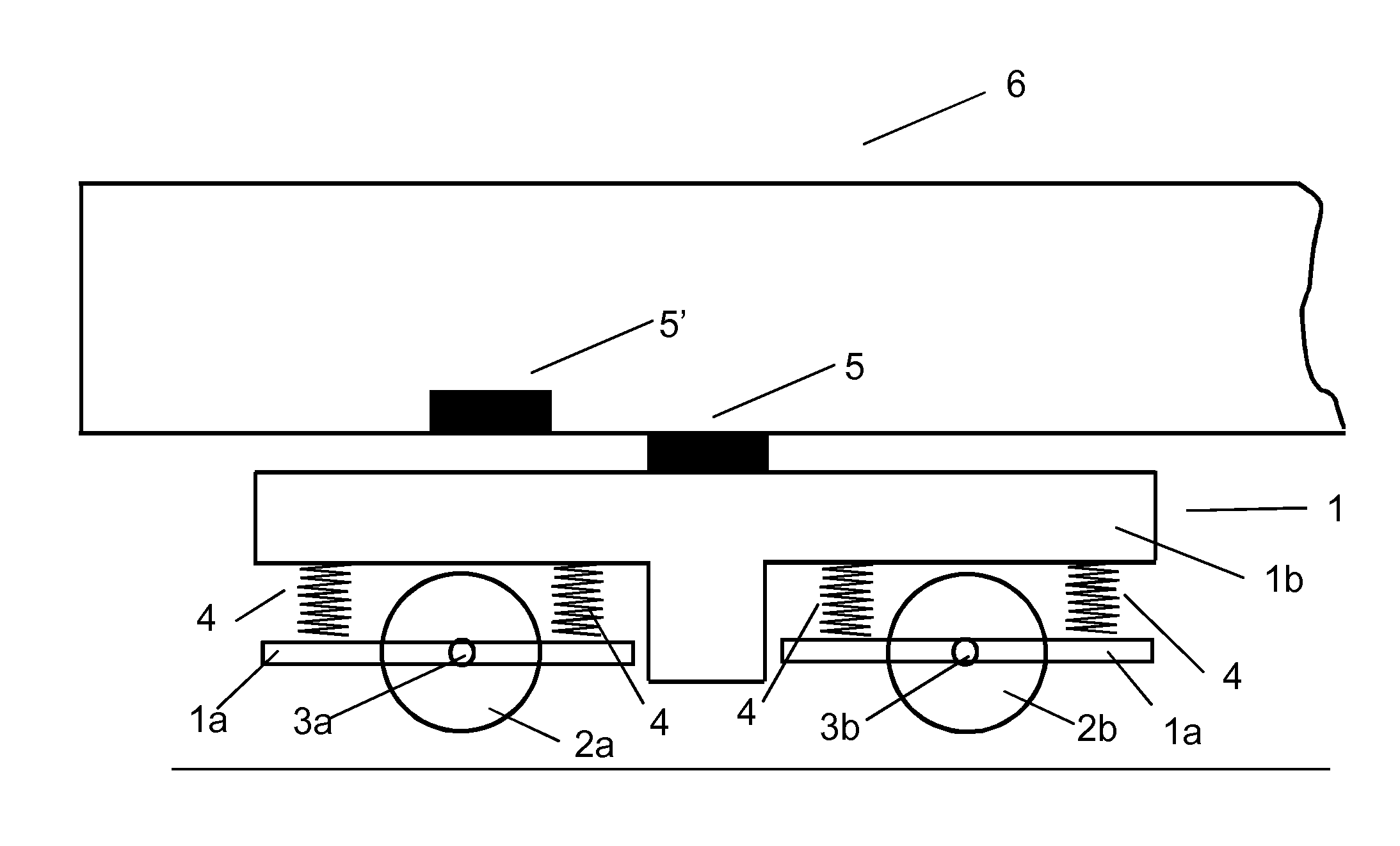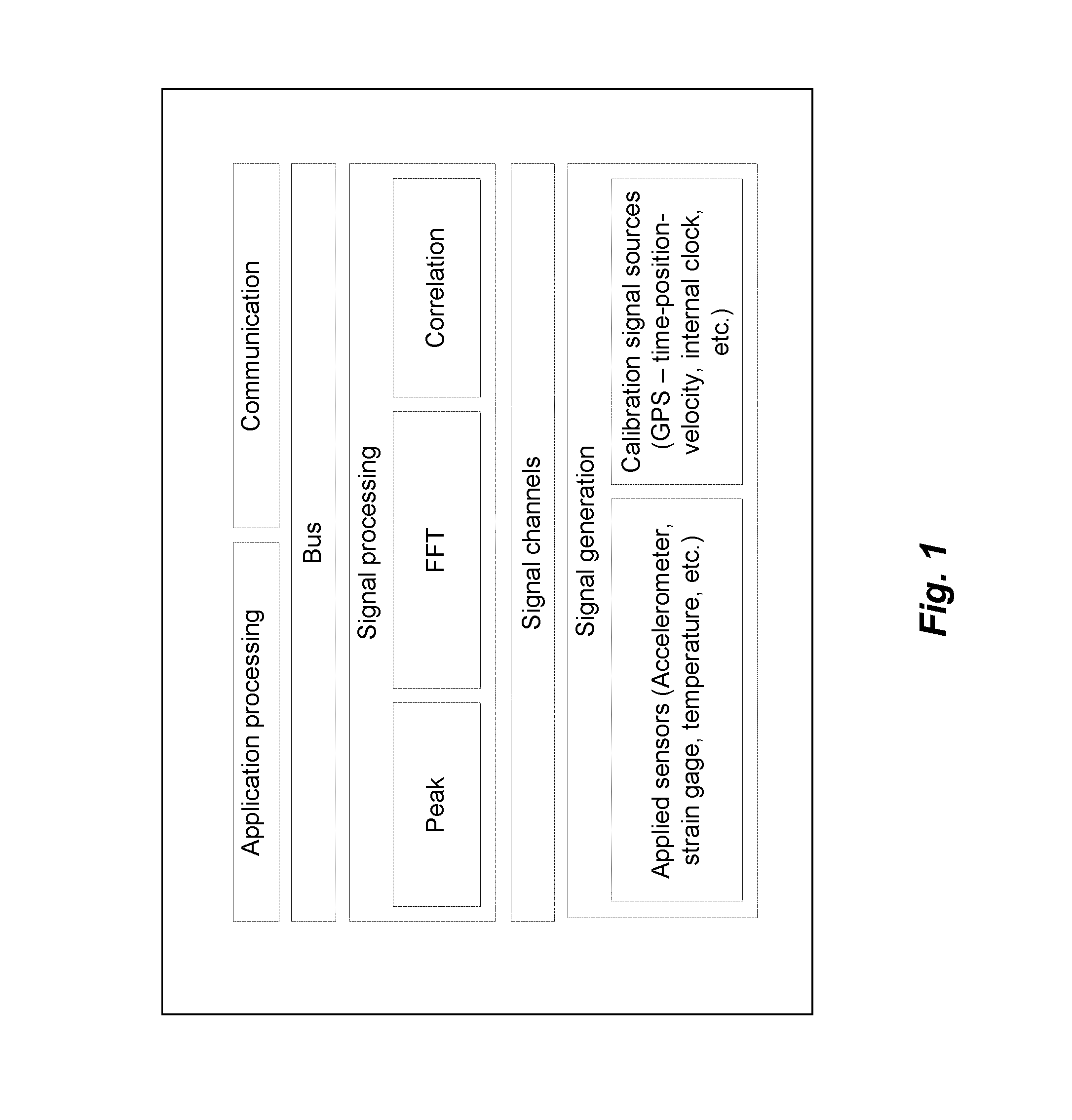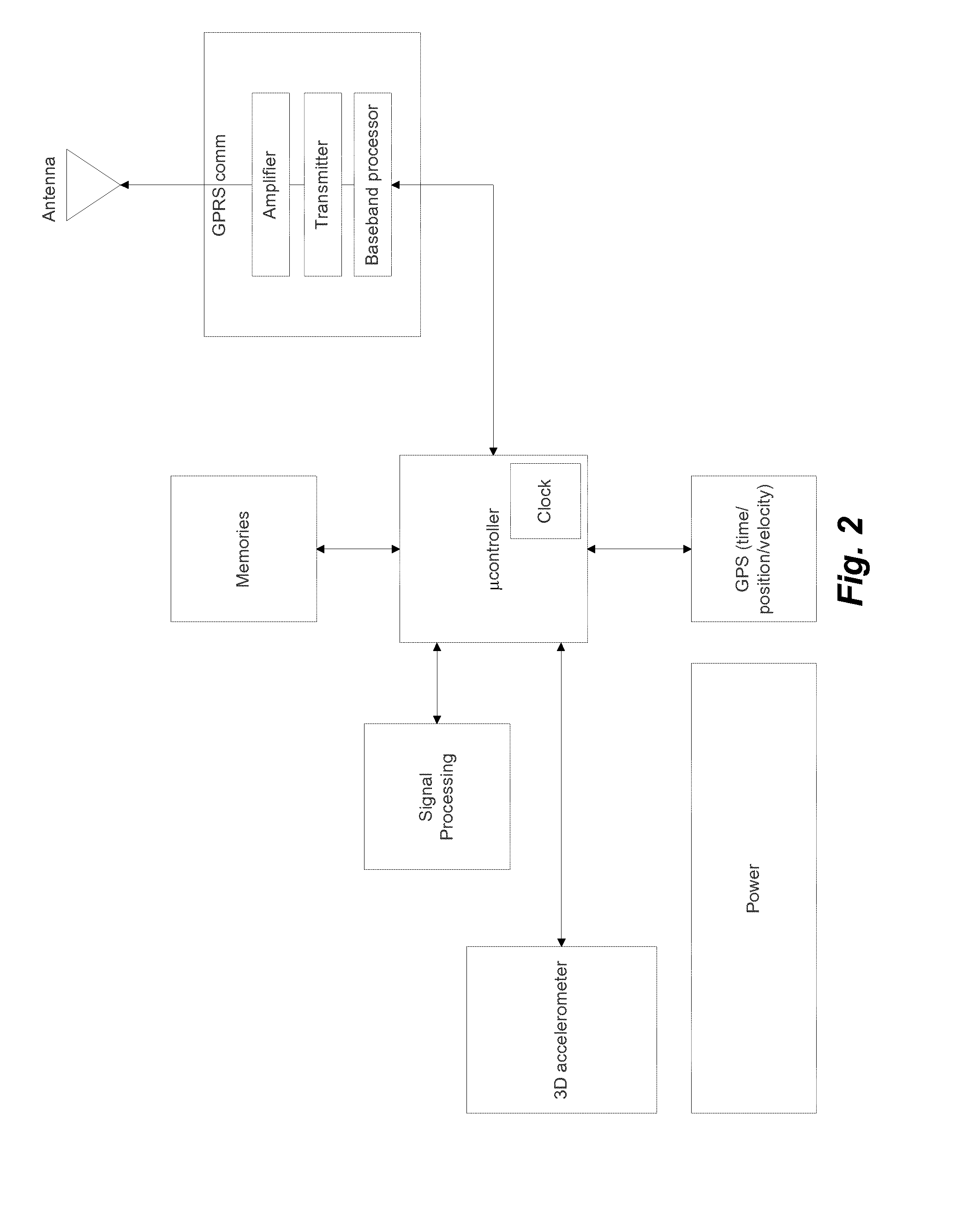Method and system for detection and analysis of railway bogie operational problems
- Summary
- Abstract
- Description
- Claims
- Application Information
AI Technical Summary
Benefits of technology
Problems solved by technology
Method used
Image
Examples
Embodiment Construction
[0161]The following examples further show in detail how an acceleration signal may be processed in order to identify and estimate defects such as the wheel flat size.
1. Detecting Wheel Flats by Means of on-Board Acceleration Analysis
A simplistic kinematic analysis follows that tries to identify how a wheel flat manifests itself through acceleration. No dynamic effects are taken into account, e.g. acceleration leading to the wheel loosing contact with the rail.
1.1 Frequency / Duration
[0162]A wheel diameter of 0.920 m (2.89 m circumference) at a speed of 50 to 90 km / h (13.9 to 25 m / s) yields a wheel rotation frequency of 5 to 9 Hz, corresponding to a time period T of 200 to 111 ms. Doubtless there tend to be numerous other wheel or axis defects that manifest themselves around these frequencies, the first-order frequency of wheel rotation.
One possible wheel flat characteristic may be the amount of acceleration experienced in total over one wheel rotation, another may be the peak accelera...
PUM
 Login to View More
Login to View More Abstract
Description
Claims
Application Information
 Login to View More
Login to View More - R&D
- Intellectual Property
- Life Sciences
- Materials
- Tech Scout
- Unparalleled Data Quality
- Higher Quality Content
- 60% Fewer Hallucinations
Browse by: Latest US Patents, China's latest patents, Technical Efficacy Thesaurus, Application Domain, Technology Topic, Popular Technical Reports.
© 2025 PatSnap. All rights reserved.Legal|Privacy policy|Modern Slavery Act Transparency Statement|Sitemap|About US| Contact US: help@patsnap.com



